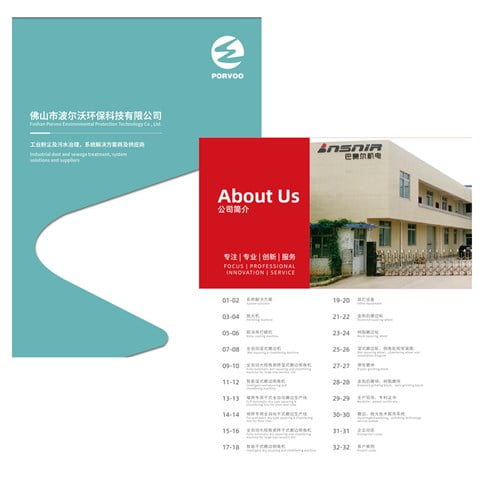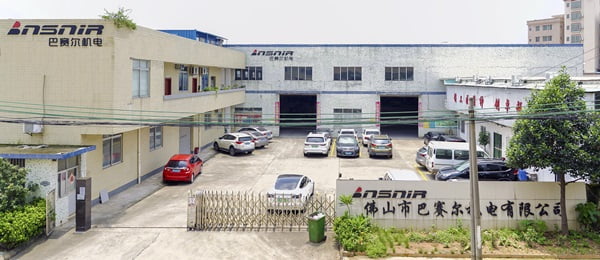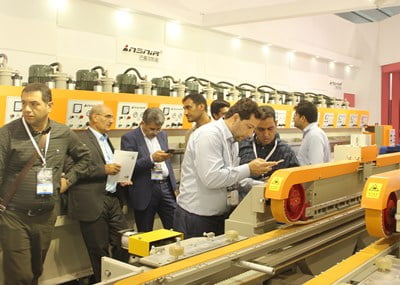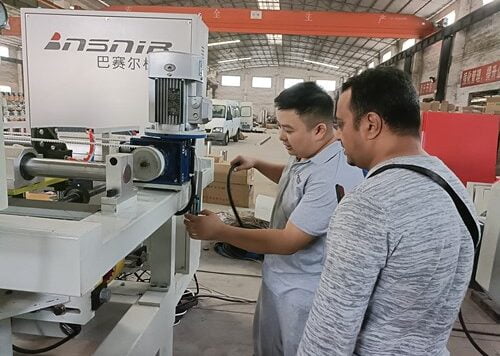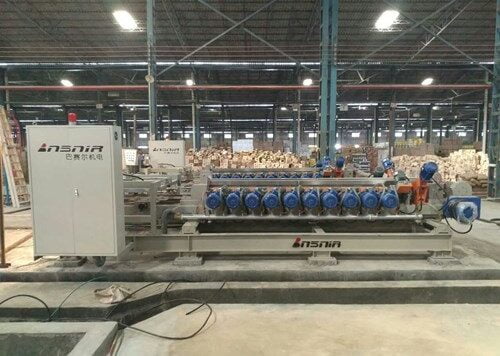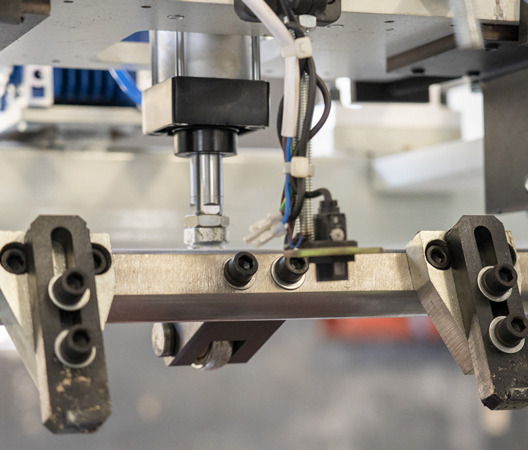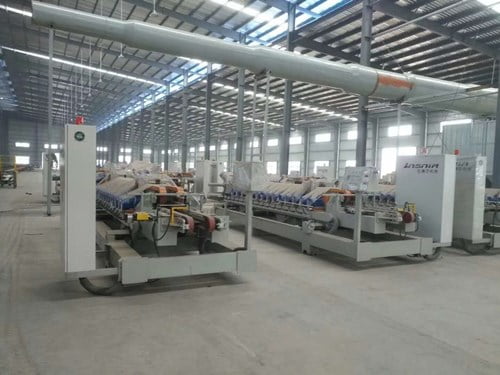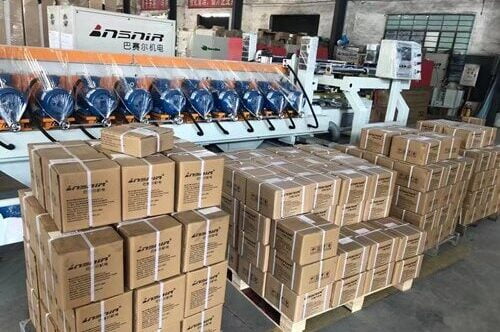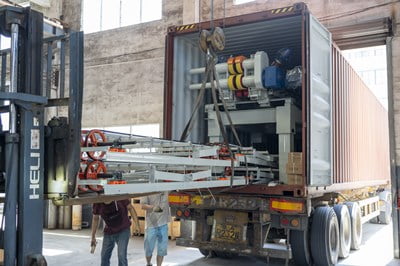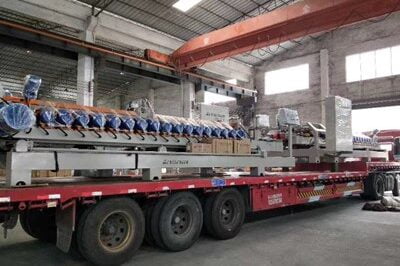The ceramic tile manufacturing industry faces unprecedented demands for specialized finishes and custom surface treatments. Whether you’re managing a high-volume production facility or developing bespoke architectural elements, selecting the right industrial solutions requires understanding complex technical requirements, operational constraints, and long-term performance expectations. This comprehensive guide examines how modern polishing equipment addresses diverse project needs while maintaining production efficiency and quality standards.
Consider the automotive industry’s recent shift toward ceramic-based interior components, or the luxury hospitality sector’s demand for unique surface textures. These applications require polishing solutions that go far beyond standard production capabilities. Without proper equipment selection and customization, manufacturers face costly delays, quality inconsistencies, and inability to meet increasingly sophisticated client specifications. The consequences extend beyond immediate project failures—reputation damage and lost market opportunities can impact business viability for years.
This article provides detailed analysis of industrial tile polishing technologies, customization strategies, and implementation approaches. You’ll discover how to evaluate equipment specifications, optimize production workflows, and leverage emerging technologies to achieve superior results across diverse applications.
What Are Industrial Tile Polishing Solutions?
Industrial tile polishing solutions encompass sophisticated machinery systems designed to achieve precise surface finishes on ceramic, porcelain, and stone tiles during manufacturing processes. These systems integrate multiple technologies including diamond abrasives, oscillating heads, and computerized control systems to deliver consistent results across large-scale production runs.
BASAIR Tech has pioneered many innovations in this field, developing equipment that handles everything from basic surface preparation to complex multi-stage finishing processes. Modern industrial solutions combine mechanical precision with digital control, enabling manufacturers to achieve surface quality levels previously impossible with traditional methods.
Core Components of Industrial Polishing Systems
The foundation of effective industrial polishing lies in understanding three primary system components. Abrasive delivery systems utilize diamond-embedded tools arranged in specific configurations to remove material and create desired surface textures. These systems operate under precisely controlled pressure and speed parameters, with typical operating ranges from 500-3000 RPM depending on material hardness and desired finish quality.
Oscillating head assemblies provide the mechanical action necessary for uniform surface treatment. Advanced systems incorporate servo-controlled positioning with accuracy tolerances of ±0.05mm, ensuring consistent results across tile surfaces. The oscillation patterns can be programmed for different effects—linear patterns for directional finishes, circular patterns for uniform polishing, or complex multi-axis movements for specialized textures.
Control systems represent the technological heart of modern polishing equipment. These systems monitor real-time parameters including pressure distribution, abrasive wear rates, and surface quality metrics. According to recent industry research, computerized control systems can improve finish consistency by up to 40% compared to manual operations while reducing material waste by 25-30%.
Performance Metrics and Capabilities
Industrial polishing solutions deliver measurable performance improvements across multiple operational areas. Production capacity typically ranges from 50-200 square meters per hour, depending on tile size, material hardness, and desired finish quality. Energy efficiency has improved significantly, with modern systems consuming 20-30% less power per square meter compared to equipment manufactured five years ago.
| Performance Parameter | Standard Range | High-Performance Range |
|---|---|---|
| Processing Speed | 50-100 m²/hr | 100-200 m²/hr |
| Surface Roughness Control | ±15% variation | ±5% variation |
| Abrasive Life | 500-1000 m² | 1000-2000 m² |
| Power Consumption | 15-25 kW/hr | 10-18 kW/hr |
How Do Custom Polishing Requirements Differ From Standard Applications?
Custom polishing demands extend far beyond conventional production parameters, requiring equipment capable of handling unique material compositions, non-standard dimensions, and specialized finish requirements. Unlike standard tile production where consistent, repeatable results are paramount, custom projects often require adaptability and precision adjustments throughout the manufacturing process.
The complexity increases exponentially when dealing with mixed-material tiles, curved surfaces, or tiles with integrated decorative elements. Standard polishing equipment typically operates within narrow parameter ranges optimized for specific tile types and sizes. Custom applications may require parameter adjustments between individual pieces, real-time quality monitoring, and specialized tooling configurations.
Material-Specific Customization Challenges
Different tile materials present unique polishing challenges that require specialized approaches. Natural stone tiles demand gentler processing to preserve inherent patterns while achieving desired gloss levels. Porcelain tiles with high hardness ratings require aggressive initial processing followed by fine finishing stages. Ceramic tiles with decorative glazes need carefully controlled pressure application to avoid damage to surface treatments.
In our experience working with luxury hotel projects, material variations within single orders can be substantial. A recent project involving 15,000 square meters of custom marble-effect porcelain required three different polishing protocols to accommodate subtle variations in base material composition. The equipment needed programming flexibility to adjust parameters automatically based on real-time material hardness readings.
Dimensional and Geometric Considerations
Custom projects frequently involve non-standard tile dimensions that challenge conventional equipment capabilities. While standard production lines are optimized for common sizes like 300x300mm or 600x600mm, custom projects may require processing tiles ranging from 50x50mm mosaics to 1500x3000mm large-format slabs. Each size category requires different handling systems, support structures, and processing parameters.
Edge treatments add another layer of complexity. Beveled edges, rounded corners, and integrated drainage channels require specialized tooling and programming. The polishing sequence must account for these features while maintaining surface quality across the entire tile. Advanced systems use multi-axis control to follow complex edge profiles while applying consistent pressure and abrasive action.
Which Types of Project-Specific Equipment Are Available?
The landscape of project-specific equipment encompasses diverse machinery categories designed to address specialized manufacturing requirements. From compact units suitable for small-batch custom work to massive production lines capable of processing architectural panels, equipment selection depends on project scale, material types, and finish requirements.
Modular polishing systems offer exceptional flexibility for custom applications. These systems allow manufacturers to configure processing stages based on specific project needs, adding or removing stations as requirements change. A typical modular system might include roughing stations, intermediate polishing stages, and final finishing units that can be reconfigured for different product lines.
Line Polishing Systems for High-Volume Custom Work
Line polishing systems represent the pinnacle of industrial polishing technology, designed for high-volume production while maintaining the flexibility needed for custom applications. These systems integrate multiple processing stations in a continuous workflow, enabling manufacturers to achieve complex finish profiles efficiently.
The ceramic tile production line polishing machines exemplify this technology, incorporating advanced features like automatic tool changing, real-time quality monitoring, and programmable processing parameters. These systems can process tiles continuously while adapting to different specifications within the same production run.
Modern line systems incorporate predictive maintenance capabilities, using sensor data to anticipate tool wear and schedule replacements before quality degradation occurs. This approach reduces downtime and maintains consistent results throughout extended production runs. Industry data indicates that predictive maintenance can improve overall equipment effectiveness by 15-20% compared to traditional scheduled maintenance approaches.
Specialized Finishing Equipment
Beyond standard polishing, many custom projects require specialized finishing techniques that demand purpose-built equipment. Texturing systems create controlled surface patterns ranging from subtle anti-slip treatments to dramatic decorative effects. These systems use programmed tool paths to create consistent patterns across large quantities while maintaining the flexibility to adjust pattern parameters for different design requirements.
Edge polishing equipment addresses the specific challenges of processing tile edges to match surface finish quality. Advanced edge polishing systems can handle complex profiles including bullnose edges, beveled treatments, and integrated drainage channels. The equipment automatically adjusts tool positioning and pressure based on edge geometry, ensuring consistent results regardless of profile complexity.
| Equipment Type | Processing Capacity | Typical Applications | Investment Range |
|---|---|---|---|
| Modular Systems | 30-80 m²/hr | Small-batch custom, R&D | $200K-$500K |
| Line Systems | 80-200 m²/hr | High-volume custom, architectural | $500K-$2M |
| Specialized Finishing | 20-100 m²/hr | Decorative effects, edge treatments | $100K-$800K |
What Industrial Applications Drive Polishing Innovation?
Industrial applications across diverse sectors continue to push the boundaries of tile polishing technology, creating demand for increasingly sophisticated solutions. The aerospace industry’s adoption of ceramic components for interior applications requires polishing equipment capable of achieving mirror-like finishes while maintaining dimensional tolerances measured in micrometers.
Automotive manufacturers increasingly specify ceramic tiles for showroom and facility applications, demanding finishes that maintain appearance under heavy traffic while providing easy maintenance. These applications require polishing solutions that can create surfaces with specific coefficient of friction values, gloss levels, and stain resistance properties.
Architectural and Construction Industry Demands
The architectural sector drives significant innovation in custom polishing solutions, particularly for large-scale commercial and residential projects. Modern building designs increasingly incorporate oversized tiles and complex surface treatments that require specialized processing capabilities. A recent mixed-use development project in Dubai required over 100,000 square meters of custom-finished tiles with varying gloss levels and surface textures to create visual interest while maintaining functional performance.
Sustainable building practices have introduced new requirements for tile finishing processes. LEED certification and similar standards increasingly consider manufacturing process efficiency, leading to demand for polishing equipment that minimizes waste, reduces energy consumption, and eliminates harmful emissions. Advanced polishing systems now incorporate water recycling capabilities and dust collection systems that exceed regulatory requirements.
Manufacturing and Industrial Facility Requirements
Industrial facilities present unique challenges for tile polishing solutions, requiring surfaces that withstand chemical exposure, thermal cycling, and mechanical stress while maintaining appearance and cleanability. Food processing facilities need surfaces that meet FDA requirements for cleanability while providing slip resistance and chemical compatibility.
Chemical processing plants require tiles with specific resistance properties that can only be achieved through precise polishing techniques. The polishing process must enhance the tile’s inherent chemical resistance while creating surfaces that facilitate cleaning and inspection. Equipment for these applications incorporates specialized abrasives and processing parameters designed to optimize both surface quality and chemical performance.
How Do You Select Specialized Machinery for Custom Projects?
Selecting appropriate specialized machinery requires systematic evaluation of project requirements, production volumes, and long-term operational goals. The decision process extends beyond basic technical specifications to encompass factors like operator training requirements, maintenance complexity, and integration with existing production systems.
Capacity planning represents a critical first step in equipment selection. While it may seem logical to choose equipment with maximum processing capacity, oversized equipment often operates inefficiently on smaller projects, leading to higher per-unit costs and reduced flexibility. Conversely, undersized equipment creates bottlenecks that limit project scalability and delivery timelines.
Technical Specification Evaluation
Modern polishing equipment specifications can appear overwhelming, with manufacturers listing dozens of parameters and capabilities. However, focusing on key performance indicators simplifies the selection process. Processing speed, measured in square meters per hour, provides a baseline for capacity planning but must be evaluated in context of desired finish quality and material types.
Power consumption and efficiency ratings directly impact operational costs throughout equipment life. Recent developments in motor technology and control systems have significantly improved energy efficiency, with some newer systems consuming 40% less power than equivalent equipment manufactured five years ago. Over a typical 10-year equipment lifespan, energy savings can total hundreds of thousands of dollars.
“The key to successful specialized machinery selection lies in understanding not just what you need to accomplish today, but how your requirements might evolve over the next decade,” notes Dr. Sarah Chen, a manufacturing systems consultant with 20 years of experience in ceramic production optimization.
Integration and Workflow Considerations
Equipment selection must consider integration with existing production systems, including material handling, quality control, and facility infrastructure. Standalone polishing equipment may offer lower initial costs but can create workflow bottlenecks and handling inefficiencies that increase overall production costs.
Automated material handling systems can significantly improve efficiency while reducing labor costs and quality variations. Modern systems incorporate vision-guided robotics that can handle tiles of varying sizes and shapes, automatically adjusting handling parameters based on real-time measurements. The advanced line polishing systems integrate these capabilities seamlessly, creating continuous workflows that minimize manual intervention.
What Are the Technical Specifications That Matter Most?
Understanding critical technical specifications enables informed equipment selection and optimal system configuration. While manufacturers provide extensive specification sheets, certain parameters have disproportionate impact on system performance and operational costs. Abrasive pressure control, typically measured in bars or PSI, directly affects both processing speed and surface quality outcomes.
Motor specifications deserve particular attention, as they determine both processing capability and energy efficiency. Variable frequency drives (VFDs) enable precise speed control while reducing energy consumption during light-load operations. Advanced systems incorporate multiple motor configurations optimized for different processing stages, with power ratings ranging from 5kW for finishing operations to 75kW for heavy roughing applications.
Precision and Control System Capabilities
Modern polishing equipment incorporates sophisticated control systems that monitor and adjust dozens of parameters in real-time. Position accuracy, typically specified to within ±0.01mm, ensures consistent results across tile surfaces and between production runs. Temperature monitoring prevents thermal damage to sensitive materials while maintaining optimal processing conditions.
Pressure distribution systems represent another critical specification area. Advanced systems incorporate multiple pressure zones with independent control, enabling optimization for different areas of the tile surface. Edge zones may require reduced pressure to prevent chipping, while center areas can accommodate higher pressures for efficient material removal.
| Specification Category | Performance Range | Impact on Quality | Energy Efficiency |
|---|---|---|---|
| Abrasive Pressure | 2-15 bar | Direct correlation | Moderate |
| Motor Power | 5-75 kW | Indirect (via speed) | High |
| Position Accuracy | ±0.01-0.1mm | Critical for consistency | Low |
| Processing Speed | 10-200 m²/hr | Quality vs. throughput tradeoff | High |
Automation and Monitoring Features
Advanced monitoring systems provide real-time feedback on processing parameters and surface quality metrics. These systems can detect quality variations before they become visible, enabling immediate corrections that prevent waste and maintain consistency. Predictive analytics capabilities analyze historical data to optimize processing parameters for specific material types and finish requirements.
Remote monitoring capabilities have become increasingly important, particularly for facilities operating multiple shifts or unmanned periods. Modern systems can send alerts for maintenance requirements, quality variations, or operational anomalies, enabling rapid response to potential issues. Cloud-based monitoring platforms provide access to performance data from anywhere, facilitating remote troubleshooting and optimization.
How Should You Implement Industrial Polishing Solutions?
Implementation of industrial polishing solutions requires systematic planning that addresses technical, operational, and human factors. Successful implementations begin with comprehensive site surveys that evaluate electrical infrastructure, facility layout, and integration requirements. Power requirements for industrial polishing equipment can exceed 100kW, necessitating electrical upgrades in many facilities.
Installation planning must account for equipment dimensions, service access requirements, and material flow patterns. Large line polishing systems may require facility modifications including reinforced flooring, overhead crane access, and specialized ventilation systems. The installation process typically requires 2-4 weeks for complex systems, during which production may be interrupted.
Training and Operational Readiness
Operator training represents a critical success factor often underestimated during project planning. Modern polishing equipment incorporates sophisticated control systems that require comprehensive understanding for optimal operation. Training programs should address both routine operations and troubleshooting procedures, with emphasis on preventive maintenance practices that maximize equipment life and performance.
Maintenance capabilities must be established before equipment startup. Specialized tools, replacement parts inventory, and service agreements should be finalized during the installation phase. Equipment manufacturers typically provide commissioning support, but long-term success depends on developing internal maintenance capabilities and establishing relationships with qualified service providers.
Quality Control and Process Optimization
Implementing effective quality control procedures ensures consistent results and identifies optimization opportunities. Modern polishing systems generate extensive data on processing parameters, surface quality metrics, and equipment performance. This data should be systematically analyzed to identify trends, optimize settings, and predict maintenance requirements.
Statistical process control (SPC) techniques help maintain quality consistency while identifying when adjustments are needed. Control charts for key parameters like surface roughness, gloss level, and dimensional accuracy provide objective measures of system performance. Regular calibration of measuring equipment ensures data accuracy and enables meaningful comparisons over time.
What Does the Future Hold for Industrial Tile Polishing?
The future of industrial tile polishing technology promises significant advances in automation, sustainability, and customization capabilities. Artificial intelligence and machine learning algorithms are beginning to optimize processing parameters automatically, learning from historical data to improve results continuously. These systems can adapt to new materials and finish requirements with minimal human intervention.
Sustainability concerns are driving development of more efficient processing methods that reduce waste, energy consumption, and environmental impact. Water recycling systems are becoming standard equipment, with some facilities achieving zero liquid discharge through advanced filtration and treatment systems. Energy recovery systems capture waste heat from polishing operations for facility heating or other processes.
Emerging Technologies and Industry Trends
Additive manufacturing integration represents an exciting frontier for tile polishing technology. As 3D printing capabilities expand to include ceramic materials, polishing equipment must adapt to handle complex geometries and integrated features impossible with traditional manufacturing methods. This trend toward mass customization requires flexible, programmable polishing systems capable of handling unique pieces efficiently.
Digital integration continues to transform industrial polishing operations. IoT sensors provide unprecedented visibility into equipment performance and product quality, enabling predictive maintenance and real-time optimization. Cloud-based analytics platforms can analyze data from multiple facilities to identify best practices and optimization opportunities across entire production networks.
“The convergence of AI, advanced sensors, and cloud computing is creating opportunities for optimization that were unimaginable just five years ago,” observes Michael Rodriguez, senior process engineer at a leading ceramic manufacturer.
Industry experts predict that within the next decade, fully autonomous polishing systems will be capable of handling complex custom projects with minimal human intervention. These systems will combine advanced robotics, AI-driven process optimization, and real-time quality monitoring to deliver results that exceed current manual capabilities while reducing costs and improving consistency.
Conclusion
Industrial tile polishing solutions for custom projects represent a sophisticated intersection of mechanical engineering, materials science, and digital technology. Success in this field requires understanding not just the technical capabilities of available equipment, but also the operational, economic, and strategic implications of different approaches. The key insights from this analysis include the critical importance of matching equipment capabilities to specific project requirements, the value of flexible, modular systems for custom applications, and the transformative potential of emerging technologies.
Investment in modern industrial solutions pays dividends through improved quality consistency, reduced operational costs, and enhanced capability to serve demanding custom applications. Organizations that embrace these technologies position themselves to capture opportunities in growing markets while building competitive advantages through superior technical capabilities.
As the industry continues to evolve, the most successful manufacturers will be those who combine technical excellence with strategic thinking, leveraging advanced polishing technologies to deliver exceptional results across diverse applications. The future belongs to organizations that can adapt quickly to changing requirements while maintaining the highest standards of quality and efficiency.
For manufacturers ready to explore advanced polishing capabilities, the specialized ceramic tile production equipment available today provides a solid foundation for future growth and success. The key is selecting solutions that not only meet current requirements but also provide the flexibility and scalability needed for tomorrow’s challenges.
Frequently Asked Questions
Q: What are the benefits of using industrial tile polishing solutions for custom projects?
A: Industrial tile polishing solutions offer several benefits for custom projects, including enhanced durability, aesthetic appeal, and ease of maintenance. These solutions can improve the slip resistance and chemical resistance of tiles, making them ideal for high-traffic areas in industrial settings. They also provide a glossy finish that enhances the overall appearance of the space.
Q: What types of tiles are best suited for industrial tile polishing solutions?
A: The best types of tiles for industrial tile polishing solutions are those made from materials like ceramic, porcelain, and fully vitrified tiles. These materials are highly durable and resistant to wear and tear, making them perfect for high-traffic industrial environments. Additionally, they can withstand harsh chemicals and extreme temperatures, ensuring they remain effective over time.
Q: How do I choose the right industrial tile polishing solution for my custom project?
A: Choosing the right industrial tile polishing solution involves considering factors such as the type of tile, the level of traffic, and the chemical exposure in the area. Here are some key considerations:
- Tile Material: Ensure the polishing solution is compatible with your tile type.
- Traffic Level: Higher traffic areas require more durable solutions.
- Chemical Resistance: Select a solution that offers protection against common industrial chemicals.
- Slip Resistance: Consider slip-resistant coatings for safety.
Q: What equipment is needed for polishing industrial tiles?
A: For polishing industrial tiles, you typically need a floor burnisher, polishing pads, and specific chemicals designed for the tile material. Here are some essential items:
- Floor Burnisher: A high-speed burnisher to apply the polish effectively.
- Polishing Pads: Various pads for different stages of polishing, such as cleaning and buffing.
- Polishing Chemicals: Solutions like floor restorers and high-speed buffing solutions to achieve the desired gloss and durability.
Q: How often should industrial tiles be polished to maintain their appearance and durability?
A: The frequency of polishing industrial tiles depends on the level of traffic and usage. Generally, high-traffic areas may require polishing every few months to maintain their appearance and durability. Regular maintenance also includes cleaning and inspecting the tiles to ensure they remain in good condition.
Q: Can industrial tile polishing solutions be customized for specific project needs?
A: Yes, industrial tile polishing solutions can be customized to meet specific project requirements. This includes selecting specific finishes, colors, and levels of slip resistance based on the project’s needs. Custom solutions can also involve choosing materials and techniques that are environmentally friendly or comply with specific regulatory standards.
External Resources
- Argelith | Ceramic Tile Manufacturer – Offers high-quality, durable ceramic tiles designed for industrial use, highlighting customizable installation options and chemical resistance, suitable for custom industrial tile projects.
- Custom Tile Polishing Tools Manufacturer – TILER – Provides a range of polishing tools and accessories specifically for tile finishing, including diamond pads and handheld polishers, valuable for custom industrial tile solutions.
- Epoxy SI – Polished Concrete Flooring – Diverzify – Specializes in delivering custom flooring solutions, including surface polishing and treatments for industrial environments, addressing unique project requirements.
- Tile and Grout Cleaning Machines – Daimer Industries – Supplies industrial-grade cleaning and polishing machines suited for maintaining and restoring tile surfaces in custom commercial or industrial settings.
- Maison Surface® Official Site – Offers bespoke tile design and manufacturing services for custom projects, including various materials and surface finishes suitable for unique industrial settings.
- Custom Tile Polishing Solutions – Industry Insights (General Resource) – Provides industry insights on trends, techniques, and specialized polishing solutions used for custom industrial tile projects, focusing on innovation and customization (closely related resource).

